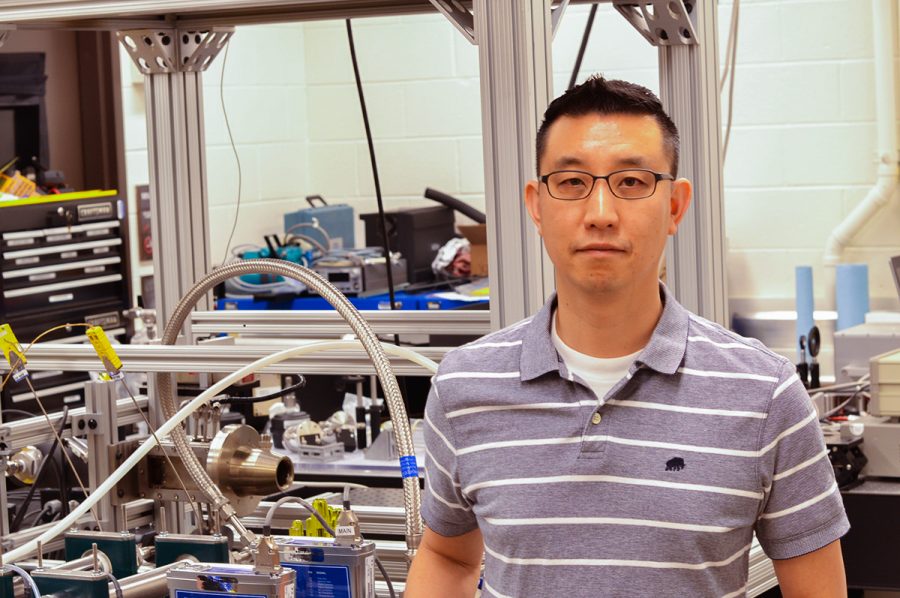New center leads to propulsion system development
Tonghun Lee is leading the new center for unmanned aircraft propulsion systems in collaboration with the U.S. Army Research Laboratory. The center aims to create an industry based on manufacturing propulsion systems by incorporating aerospace manufacturers.
Nov 29, 2018
Researchers from the U.S. Army Research Laboratory and engineering professors will collaborate in researching propulsion systems for unmanned aircrafts in a new center at the University.
The development of The Center for Unmanned Aircraft Systems Propulsion was initiated by the U.S. Department of Defense and led by the ARL, which began approximately three years ago.
Tonghun Lee, professor in Engineering, has a long history working with the ARL, which led to him being asked to found and lead the center at the University.
Lee said unmanned aircraft vehicles, commonly known as drones, have become more prevalent in the past decade and need propulsion systems, but there is no good manufacturer in the U.S. that specializes in these propulsion units.
“Anything having to do propulsion systems has to do with the center,” Lee said. “So everything surrounding and connected to supporting the propulsion system of the UAV is going to be addressed by the center.”
Get The Daily Illini in your inbox!
The center’s collaborators include the ARL, Argonne National Laboratory, the U.S. Army, the U.S. Navy and the U.S. Air Force. Researchers from Northwestern University, the University of Wisconsin, Madison and the University of Illinois at Chicago will also be contributing to the center with their own propulsion system improvement projects.
SungWoo Nam, associate professor in Engineering and one of the earliest collaborators, said once the center creates a monitoring system for UASs under extreme conditions and a design for new propulsion systems, ARL can turn the projects into engines.
“Major aspects of the center are understanding the combustion process, being able to monitor as the engine operates at that extreme condition and come up with (and) understand as well as a design that can be turned into an actual engine by ARL,” Nam said.
Projects at the center so far have included researching engines to replace the currently used intermittent engines and creating high-tech temperature detectors to place within engines.
One of the earliest projects, before the center even had a name, was done by Daniel Bodony, associate professor in Engineering. His work involves using powerful computers to solve problems of fluid dynamics.
“Professor Lee asked me to get involved and then the Army asked me to work on problems of aerodynamics that (have) to do with turbochargers to help power unmanned aerial systems,” Bodony said.
One of the long-term goals of the center is to create an industry based around manufacturing UAS propulsion systems by incorporating aerospace manufacturers, such as Boeing, into the project.
“The technology here will trickle down by other means into the private sector, which is usually how this thing happens,” Lee said. “So we expect to transition much of the technology we address in the center for the civilian center in the future.”






